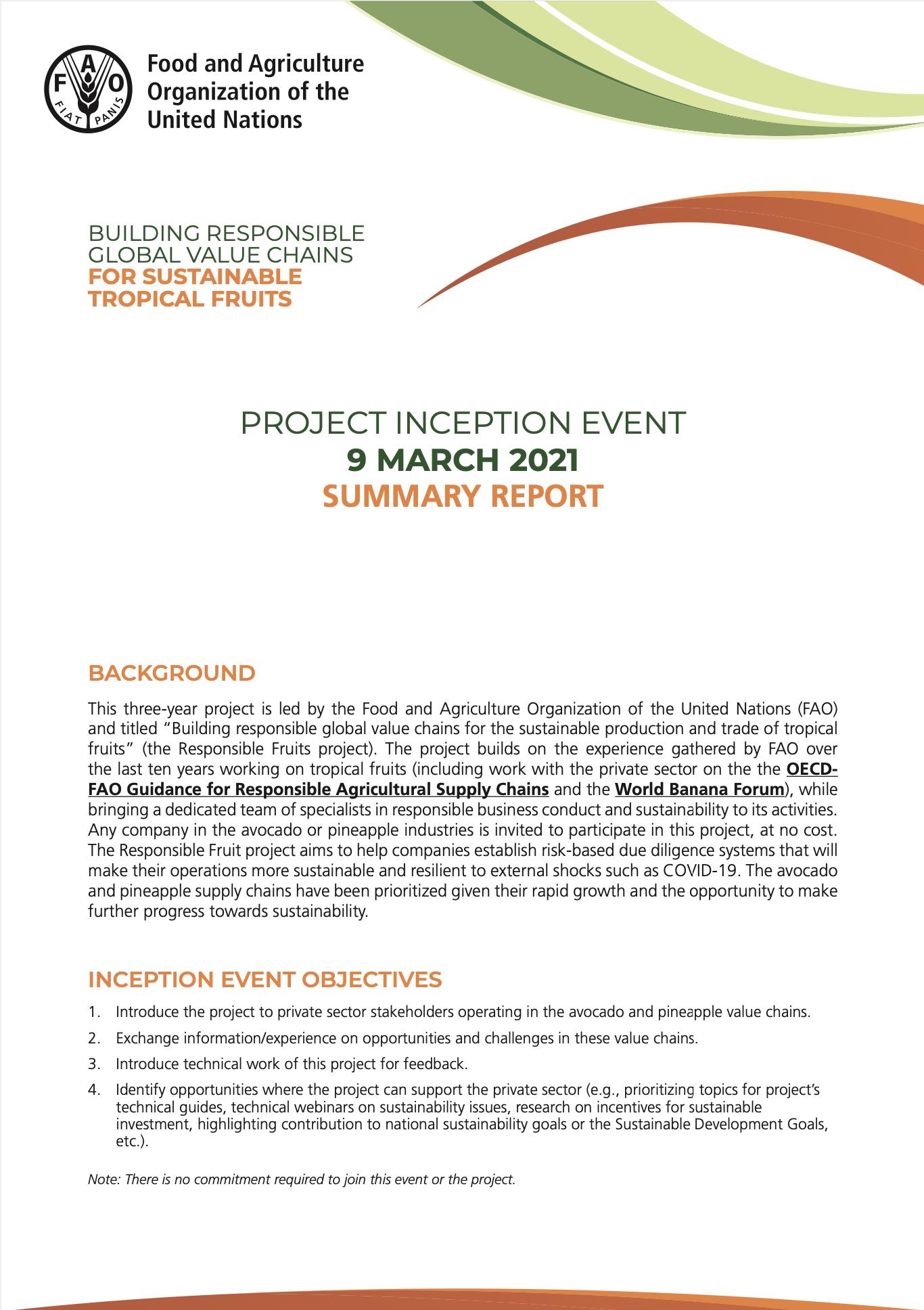
Building responsible global value chains for sustainable tropical fruits
09/03/2021
This three-year project is led by the Food and Agriculture Organization of the United Nations (FAO) and titled “Building responsible global value chains for the sustainable production and trade of tropical fruits” (the Responsible Fruits project).
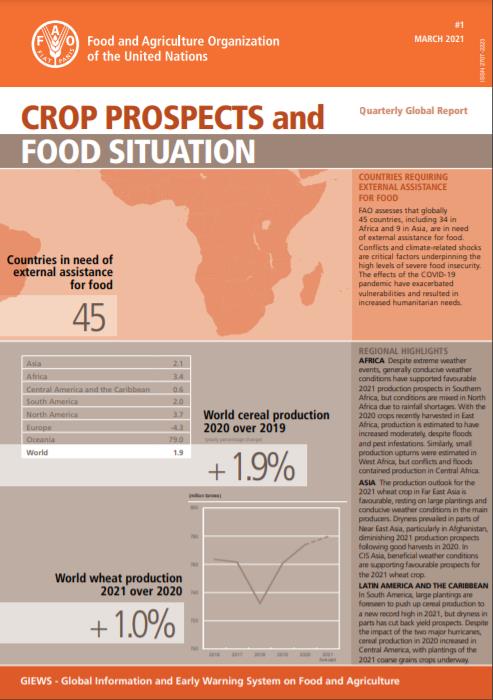
Crop Prospects and Food Situation - Quarterly Global Report, No. 1, March 2021
04/03/2021
FAO assesses that globally 45 countries, including 34 in Africa and 9 in Asia, are in need of external assistance for food. Conflicts and climate-related shocks are critical factors underpinning the high levels of severe food insecurity. The effects of the COVID-19 pandemic have exacerbated vulnerabilities and resulted in increased humanitarian needs.
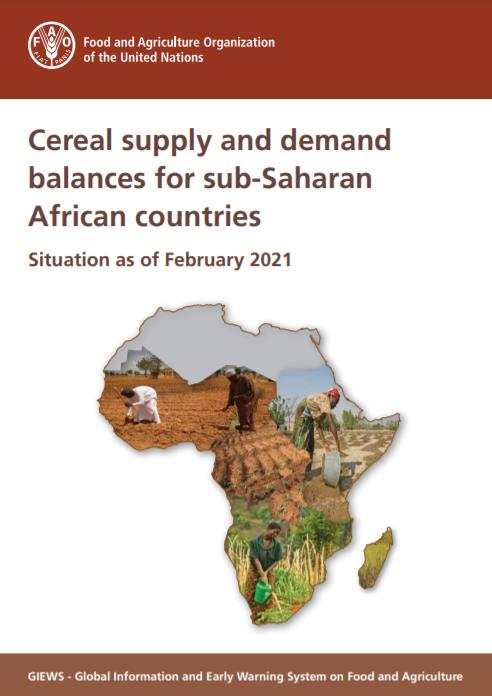
Cereal supply and demand balance for sub-Saharan African countries - No.1, March 2021
04/03/2021
The Global Information and Early Warning System on Food and Agriculture (GIEWS) continuously monitors crop prospects and food security situation at global, regional, national and sub-national levels and warns of impending food difficulties and emergencies. Established in the wake of the world food crisis of the early 1970’s, GIEWS maintains a unique database on all aspects of food supply and demand for every country of the world. The System regularly provides policy makers and the international community with up‑to‑date information so that timely interventions can be planned and suffering avoided. The FAO/GIEWS Country Cereal Balance System (CCBS) is a database of annual supply and utilization balances for main cereals, covering all countries of the world. Since 1980, the FAO/GIEWS Team maintains and updates it continually. This statistical report contains a subset of CCBS data and presents updated cereal supply and demand balances for all sub-Saharan African countries. It complements the information of the FAO/GIEWS Crop Prospects and Food Situation report and is published four time a year with the same schedule.
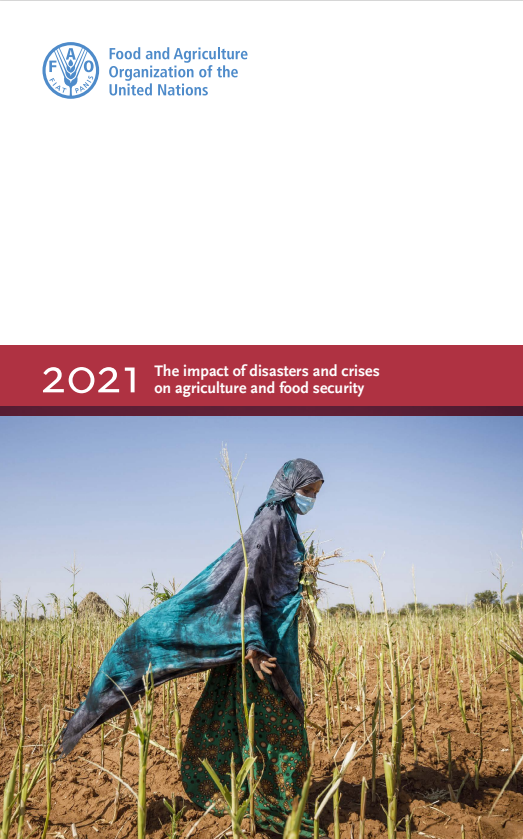
The impact of disasters and crises on agriculture and food security: 2021
01/03/2021
On top of a decade of exacerbated disaster loss, exceptional global heat, retreating ice and rising sea levels, humanity and our food security face a range of new and unprecedented hazards, such as megafires, extreme weather events, desert locust swarms of magnitudes previously unseen, and the COVID-19 pandemic.
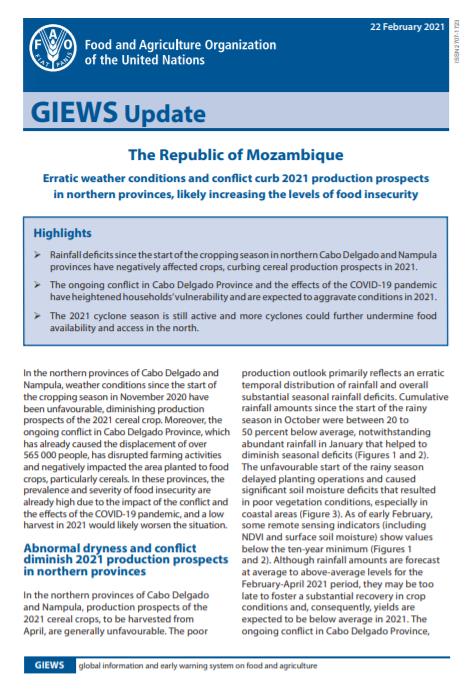
GIEWS Update - The Republic of Mozambique, 22 February 2021
22/02/2021
Rainfall deficits since the start of the cropping season in northern Cabo Delgado and Nampula provinces have negatively affected crops, curbing cereal production prospects in 2021. The ongoing conflict in Cabo Delgado Province and the effects of the COVID-19 pandemic have heightened households’ vulnerability and are expected to aggravate conditions in 2021. The 2021 cyclone season is still active and more cyclones could further undermine food availability and access in the north.
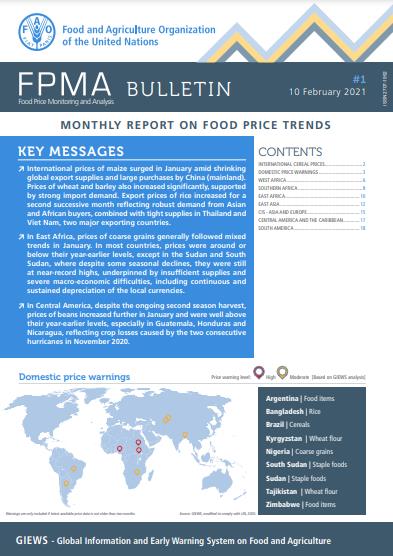
Food Price Monitoring and Analysis (FPMA) Bulletin # 1, 10 February 2021
10/02/2021
International prices of maize surged in January amid shrinking global export supplies and large purchases by China (mainland). Prices of wheat and barley also increased significantly, supported by strong import demand. Export prices of rice increased for a second successive month reflecting robust demand from Asian and African buyers, combined with tight supplies in Thailand and Viet Nam, two major exporting countries. In East Africa, prices of coarse grains generally followed mixed trends in January. In most countries, prices were around or below their year-earlier levels, except in the Sudan and South Sudan, where despite some seasonal declines, they were still at near‑record highs, underpinned by insufficient supplies and severe macro-economic difficulties, including continuous and sustained depreciation of the local currencies. In Central America, despite the ongoing second season harvest, prices of beans increased further in January and were well above their year-earlier levels, especially in Guatemala, Honduras and Nicaragua, reflecting crop losses caused by the two consecutive hurricanes in November 2020.
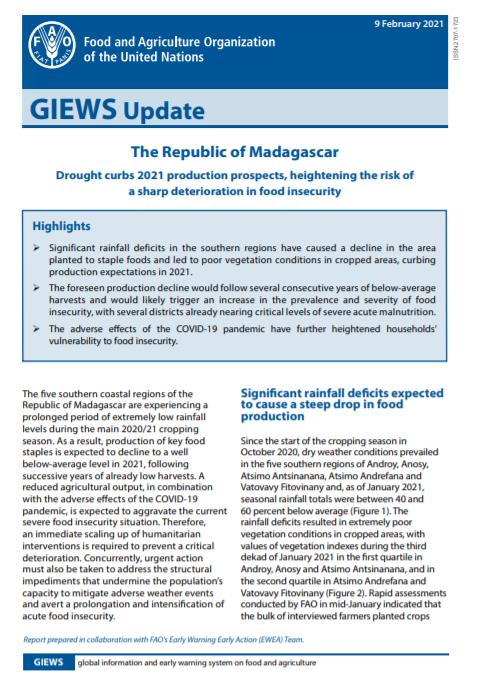
GIEWS Update - The Republic of Madagascar, 9 February 2021
09/02/2021
Significant rainfall deficits in the southern regions have caused a decline in the area planted to staple foods and led to poor vegetation conditions in cropped areas, curbing production expectations in 2021. The foreseen production decline would follow several consecutive years of below-average harvests and would likely trigger an increase in the prevalence and severity of food insecurity, with several districts already nearing critical levels of severe acute malnutrition. The adverse effects of the COVID-19 pandemic have further heightened households’ vulnerability to food insecurity.
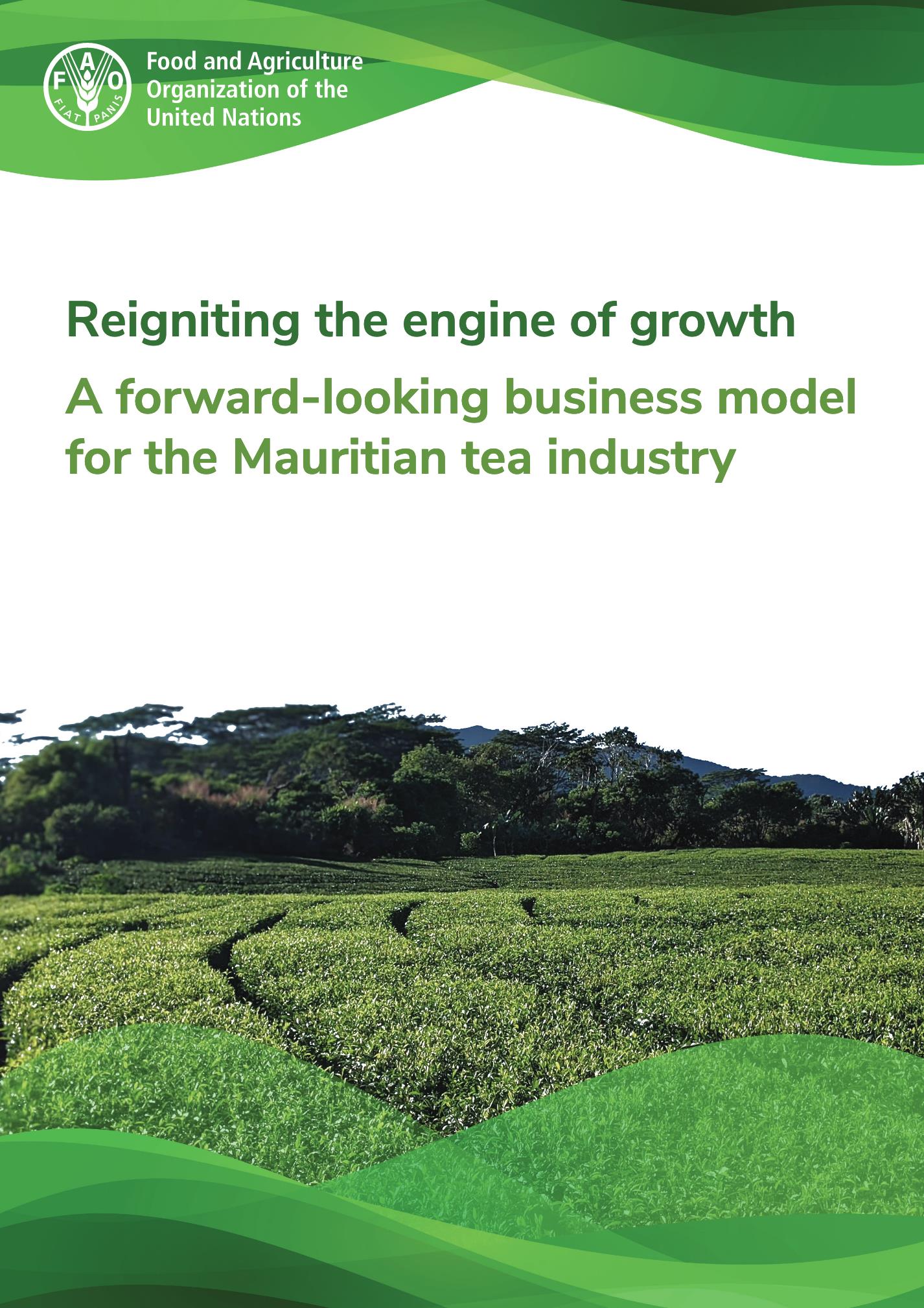
Reigniting the engine of growth
05/01/2021
This report finds that the decline in the tea sector in Mauritius is the result of uncoordinated institutional actions, the absence of comprehensive policy and national strategies, weak legislation and regulatory framework.
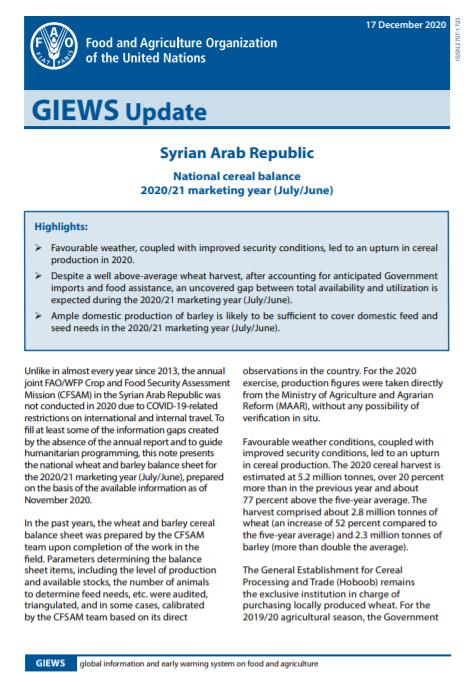
GIEWS Update - Syrian Arab Republic, 17 December 2020
17/12/2020
Favourable weather, coupled with improved security conditions, led to an upturn in cereal production in 2020. Despite a well above-average wheat harvest, after accounting for anticipated Government imports and food assistance, an uncovered gap between total availability and utilization is expected during the 2020/21 marketing year (July/June). Ample domestic production of barley is likely to be sufficient to cover domestic feed and seed needs in the 2020/21 marketing year (July/June).
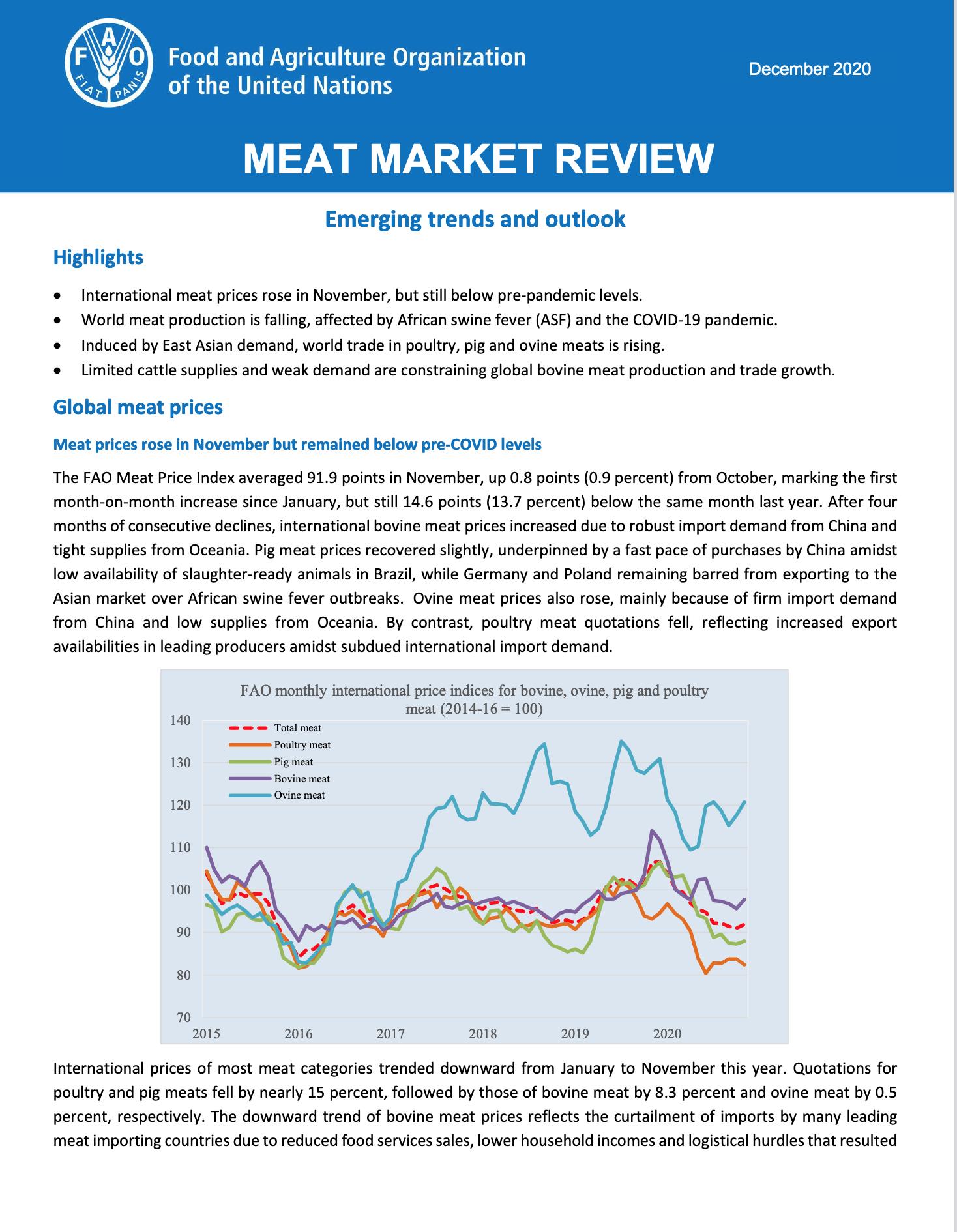
Meat Market Review: Emerging trends and outlook, December 2020
16/12/2020
The December issue of the Meat Market Review presents emerging trends and outlook of international meat prices, global meat production and trade in meat products. In November, the FAO Meat Price Index rose, after 10-months of decreases, underpinned by a fast pace of purchases by China and limited supplies of most meat products. World meat production in 2020 is forecast to fall due to the African swine fever viral disease that constrained pig meat production in East Asia. However, world trade in poultry and pig meat products is rising, induced by robust import demand from East Asia. Many other countries are curtailing imports, reflecting market disruptions, lower household incomes and logistical hurdles that resulted from the global health crisis.
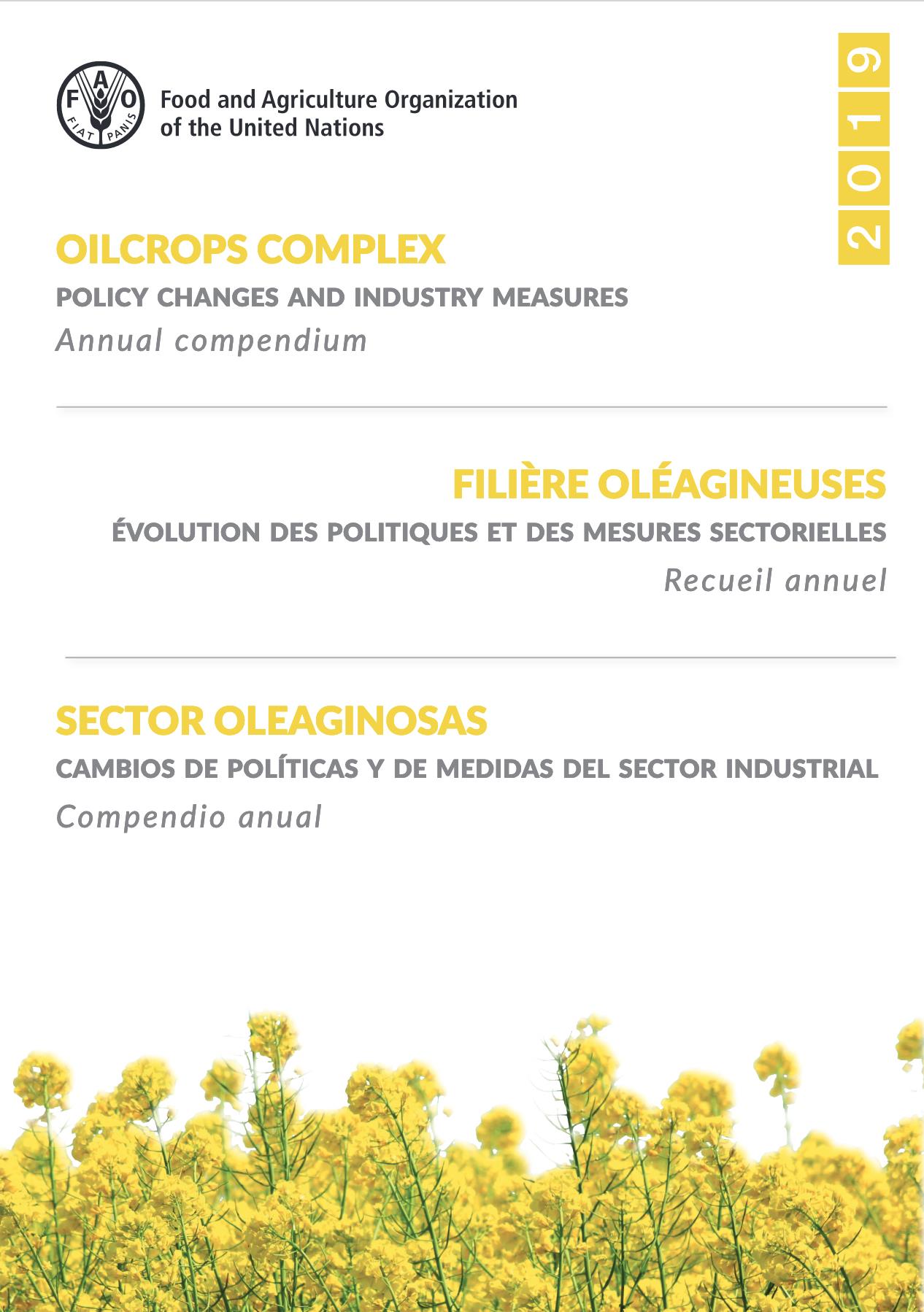
Oilcrops complex: policy changes and industry measures - Annual compendium - 2019
16/12/2020
The 2019 compendium offers an overview of salient government policies and related private sector measures concerning global and national markets for oilcrops and derived products. Its purpose is to facilitate the work of policy makers, market experts, analysts and other interested stakeholders by providing a short, concise overview of policy developments relevant to the sector. Detailed news items are presented in tabular form (in English only), preceeded by a brief discussion of the key policy trends observed in the year under review.
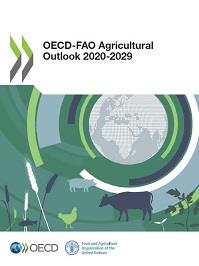
OECD-FAO Agricultural Outlook 2020-2029
14/12/2020
The Agricultural Outlook 2020-2029 is a collaborative effort of the Organisation for Economic Co-operation and Development (OECD) and the Food and Agriculture Organization (FAO) of the United Nations. It brings together the commodity, policy and country expertise of both organisations as well as input from collaborating member countries to provide an annual assessment of the prospects for the coming decade of national, regional and global agricultural commodity markets. This year's edition features a short scenario on COVID-19 and its impact on food and agriculture.
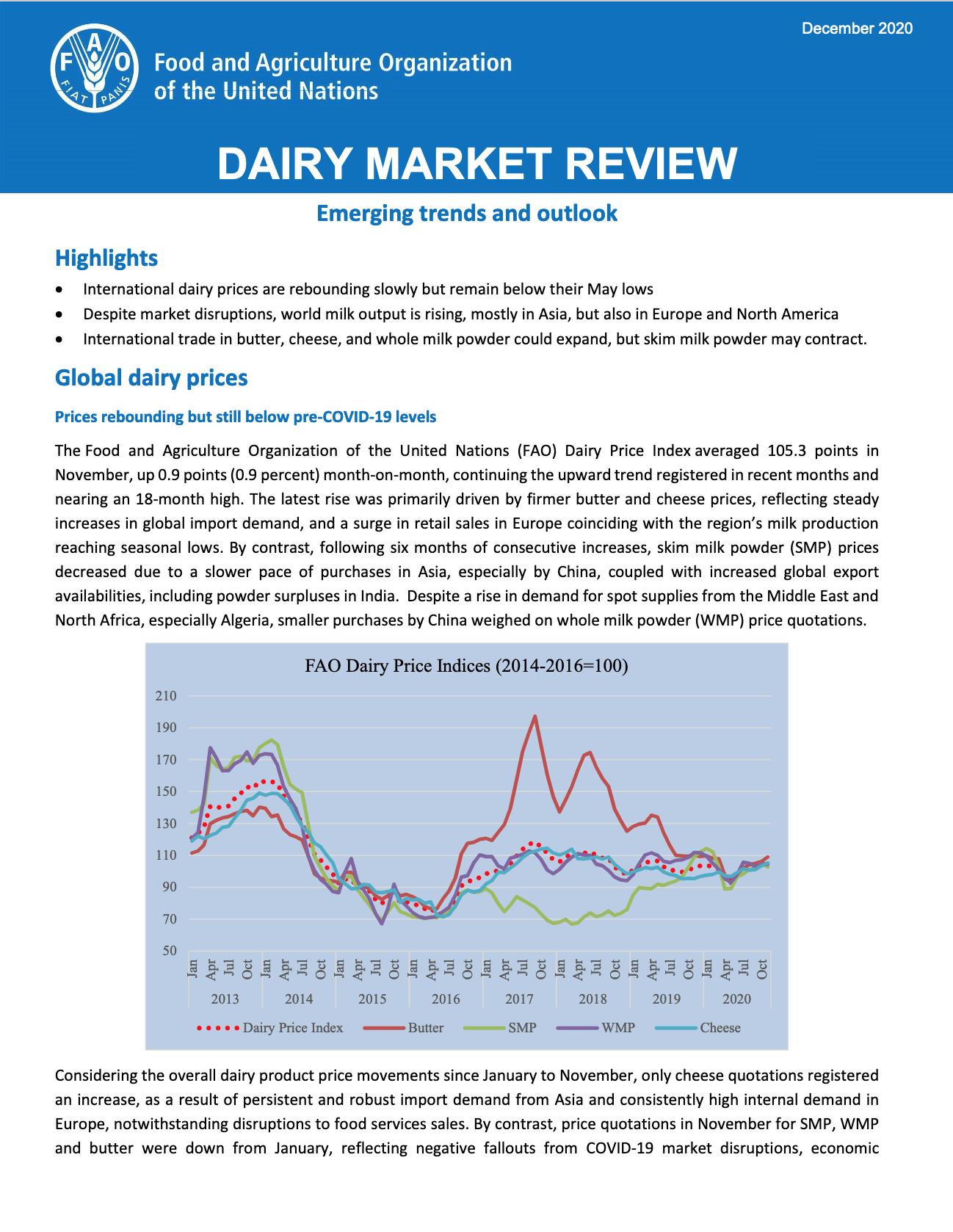
Dairy Market Review - Emerging trends and outlook - December 2020
11/12/2020
The December issue of the FAO Dairy Market Review highlights the emerging trends and outlook. It indicates that international dairy prices are rebounding slowly, but remain below their pre-pandemic levels. Considering the overall dairy product price movements from January to November, only cheese quotations registered an increase, reflecting persistent and robust import demand from Asia and internal demand in Europe. Despite COVID-19-related market disruptions, world milk production is rising, mostly in Asia, but also in Europe and North America. In the meantime, international trade in butter, cheese and whole milk powder could expand, but skim milk powder trade (SMP) may contract.
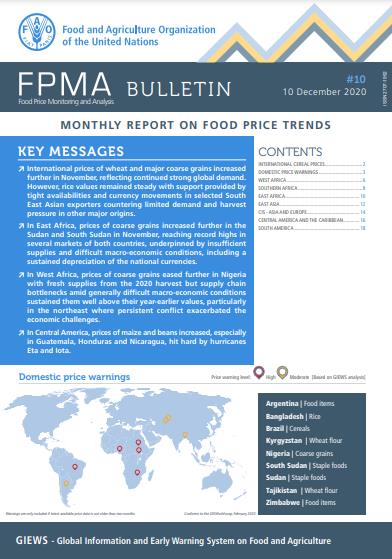
Food Price Monitoring and Analysis (FPMA) Bulletin # 10, 10 December 2020
10/12/2020
International prices of wheat and major coarse grains increased further in November, reflecting continued strong global demand. However, rice values remained steady with support provided by tight availabilities and currency movements in selected South East Asian exporters countering limited demand and harvest pressure in other major origins. In East Africa, prices of coarse grains increased further in the Sudan and South Sudan in November, reaching record highs in several markets of both countries, underpinned by insufficient supplies and difficult macro-economic conditions, including a sustained depreciation of the national currencies. In West Africa, prices of coarse grains eased further in Nigeria with fresh supplies from the 2020 harvest but supply chain bottlenecks amid generally difficult macro-economic conditions sustained them well above their year-earlier values, particularly in the northeast where persistent conflict exacerbated the economic challenges. In Central America, prices of maize and beans increased, especially in Guatemala, Honduras and Nicaragua, hit hard by hurricanes Eta and Iota.
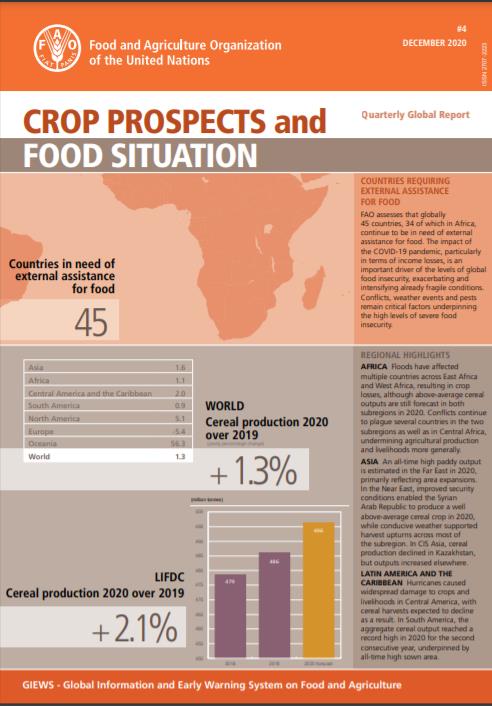
Crop Prospects and Food Situation - Quarterly Global Report, No. 4, December 2020
03/12/2020
FAO assesses that globally 45 countries, 34 of which in Africa, continue to be in need of external assistance for food. The impact of the COVID-19 pandemic, particularly in terms of income losses, is an important driver of the levels of global food insecurity, exacerbating and intensifying already fragile conditions. Conflicts, weather events and pests remain critical factors underpinning the high levels of severe food insecurity.
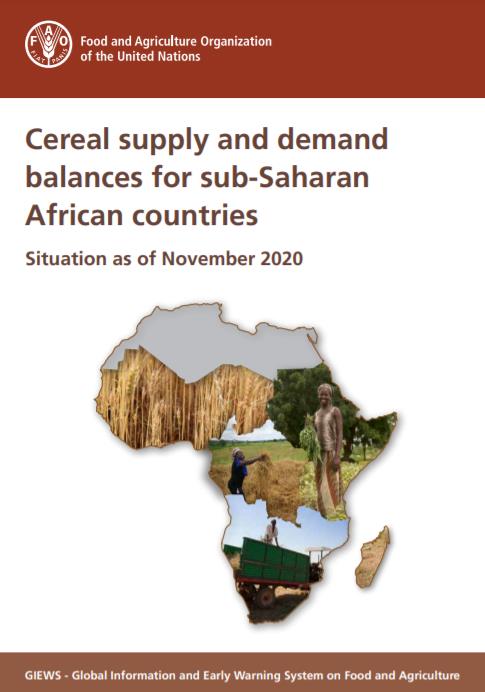
Cereal supply and demand balances for sub-Saharan African countries - No.4, December 2020
03/12/2020
This statistical report contains a subset of CCBS data and presents updated cereal supply and demand balances for all sub-Saharan African countries. It complements the information of the FAO/GIEWS Crop Prospects and Food Situation report and is published four time a year with the same schedule.
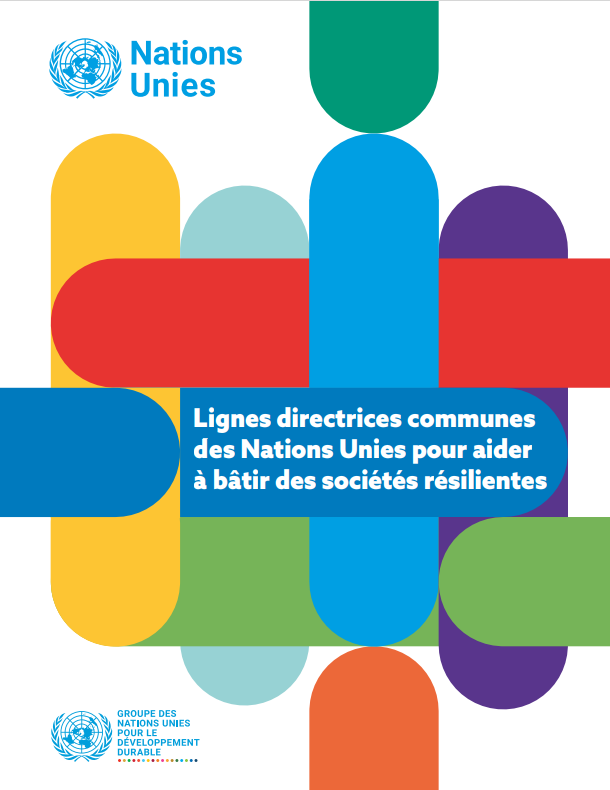
UN Common Guidance on Helping Build Resilient Societies
01/12/2020
The United Nations Common Guidance on Helping Build Resilient Societies (in short, UN Resilience Guidance) comes at a time when resilience is being pushed to its limits globally. The widespread health, socio-economic and other impacts of the COVID-19 pandemic are likely to reverberate long into the future, deepening existing inequalities, hunger and poverty and shrinking economies.



